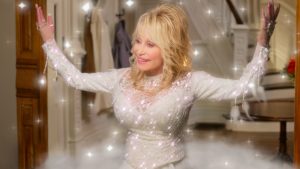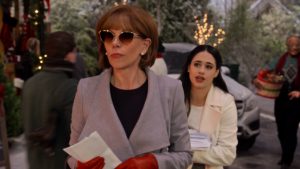For the fourth-largest continent on the planet Earth, South America has only served as the setting of one major Disney Animation film to date – the ambiguously Incan-inspired The Emperor’s New Groove – while Europe, only the fifth-largest continent, is the backdrop to innumerable Disney fairytales, from Snow White to Frozen II. But that’s going to change later this year with the release of Encanto, a completely original musical from the mind of Tangled director Byron Howard, which will turn a spotlight on Colombian culture and folklore. And today, we got our first good look at Encanto in a short but visually stunning teaser that effortlessly nudges the film to the forefront of the race for Best Animated Feature at next year’s Oscars.

Encanto continues Disney Animation’s recent trend of experimenting with their tried-and-true Disney Princess formula, as the film’s frizzy-haired, bespectacled heroine Mirabel isn’t technically a Princess by the studio’s strict standards. Instead, she hails from a highly-esteemed family of matriarchal multigenerational magic-users who live together in a marvelous house called Casa Madrigal on the edge of the Amazon Rainforest. She wears a dress, so by Maui’s definition she’s at least halfway to being a princess already, but the only animal sidekicks at Casa Madrigal seem to be devoted to another young scion of the family tree; a boy whose name is probably Carlos, if character details obtained by The DisInsider in December of last year still hold true.
And oh, the animal sidekicks! Honestly, most of the Disney Princesses should be embarrassed, parading around in the forest with their deer and chipmunks and the occasional singing crab, while Carlos is out here riding a jaguar, accompanied at all times by a tapir, a flock of macaws and toucans, a family of capybaras, and a couple of ring-tailed coatis. The sheer abundance and diversity of South American wildlife on display in Encanto is something I could ramble on about for quite some time, but I think I’ll spare you. I just hope there’s plenty of scenes in the rainforest, so we can see some tree-frogs, maybe an anaconda or two, perhaps a sloth.
But I also want to spend as much time as possible in Casa Madrigal, the sentient house. We’re so used to seeing magic – particularly in animation – as clouds of multi-colored CGI glitter and smoke, that it’s a really welcome change to visit Casa Madrigal, where the magic is almost entirely conveyed through ripples in the stonework, tiled surfaces, and floorboards, which create kaleidoscopic patterns or help the Madrigal family in small ways. Each of the Madrigals has their own individual talent, which they bring to the design and decoration of their little corner of Casa Madrigal – from one girl’s bedroom balcony being weighed down by the giant pink flowers she’s able to conjure from thin air (based on The DisInsider‘s reporting, I suspect that girl’s name is Ines), to Carlos’ being decorated with paintings of the animals with which he can communicate. I love it when a film is able to make a location feel vividly real, and Encanto definitely seems to be doing just that.

The crux of Encanto‘s plot, however, is that our protagonist, Mirabel, is the only member of the Madrigal family who doesn’t have a magical gift – and it inspires an amusing, if slightly awkwardly written gag in the trailer where she gets a gift from the postman as a kind of “not-special special”. I can’t pass judgment on the story just yet, because that’s essentially everything we know: and to be honest, a few of the shots in the trailer don’t even look like scenes from the actual movie, but more like some kind of pre-vis animation designed to showcase character movements and mannerisms (although if they are from the movie, I suspect many of them are from some kind of introductory montage at the beginning).
We also don’t get to hear too much of Lin-Manuel Miranda’s original music for Encanto in this teaser – just bits and pieces of something that sounds reminiscent of Miranda’s work on In The Heights, his first stage musical and the source material for a recent film adaptation which Miranda produced and cameoed in. That being said, Miranda is still undeniably a big part of Encanto – for instance, I can’t imagine it’s a coincidence that Stephanie Beatriz went from having a scene-stealing role in In The Heights to being confirmed as the voice of Mirabel Madrigal – and I’m sure it won’t be long before the airwaves are deluged with whatever catchy new earworm he’s cooked up.

It’s early to be making predictions about Encanto‘s quality when the film is still several months away, but I know that there’s a number of people who will love this, and I expect it to be a big hit with viewers who are excited for the mix of Colombian representation and Disney magic, fans who have been starved for Disney musicals recently, and folks who are really just here for Mirabel’s muscular older sister Lydia, whose biceps are giving Princess Namaari’s rhomboids a run for their money.
Trailer Rating: 8/10





